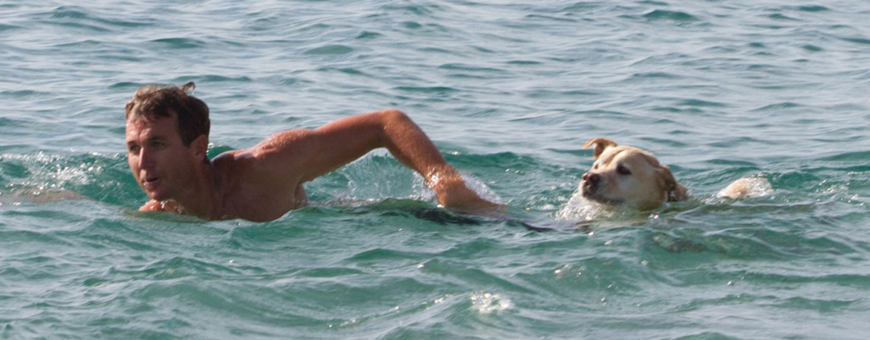Exercise
Keep Cool & Fit: Take Your Dog for a Swim

With the warm months of summer approaching, dogs and their owners will probably find themselves spending more and more time around the water. Whether a favorite swimming hole or a backyard pool, there isn’t a better way to beat the heat. While swimming has long been a favorite dalliance of both dogs and their owners, it also has tremendous health benefits.
The resistance of water is roughly 15-20x greater than that of air so swimming is more physically challenging for a dog than walking or running. Therefore, swimming has been shown to help improve muscle strength/tone, cardiovascular health and respiratory ability.
Additionally, swimming is extremely low-impact compared to the concussive nature of running and jumping. This helps preserve a dog’s muscles and joints, especially important among older or overweight dogs.
Swimming is also a significantly more efficient exercise than running. According to canine physiologist Dr. Arleigh Reynolds, dogs do as much work in 1 minute swimming as they do in 4 minutes of running.
The positive effects are just cosmetic, either. According to canine hydrotherapy specialist, Cindy Horsfall, swimming can also improve a dogs skin, coat, nervous system, circulatory system and more.
Many vets and canine therapists like Horsfall are turning to hydrotherapy to help rehabilitate dogs after serious injury or promote a healthier lifestyle among older animals. The zero gravity environment allows dogs to increase range of motion in their joints by introducing new movement patterns.
Not surprisingly, swimming is a potentially more dangerous activity than running. While the majority of dogs love the water and expert swimmers, some are not as proficient. Before leaping in for the first time, test your dogs comfort level and ability. Generally, shorter, thicker animals struggle in the water. Also, if it’s a new activity consider the duration. Most dogs don’t have the self-control or wherewithal to notice fatigue when playing an exciting game of water fetch.
Owners need to be careful with dogs around new pools or waterways. Dr. Ryan Ong, of Perth, Australia, noted that dog drownings may exceed those of humans in frequency.
“Dog owners may not realise the need to be watching out for their pets like they do their children when it comes to safety around water,” says Dr. Ong.
“If your dog likes to swim in the pool with the family, make sure one of the first things it learns is how to get out of the pool,” said Dr Ong. “If they have to be in the pool area, ensure that the pool blanket is off or a secure cover or netting is used to cover the pool and prevent them from falling in. If you are going out on the water with your dog, consider a doggie life jacket especially if they are not strong swimmers.”
In conclusion, swimming is an incredibly fun, refreshing activity for you and your dog. The health benefits are almost innumerable, but the activity is not bereft of risk.
